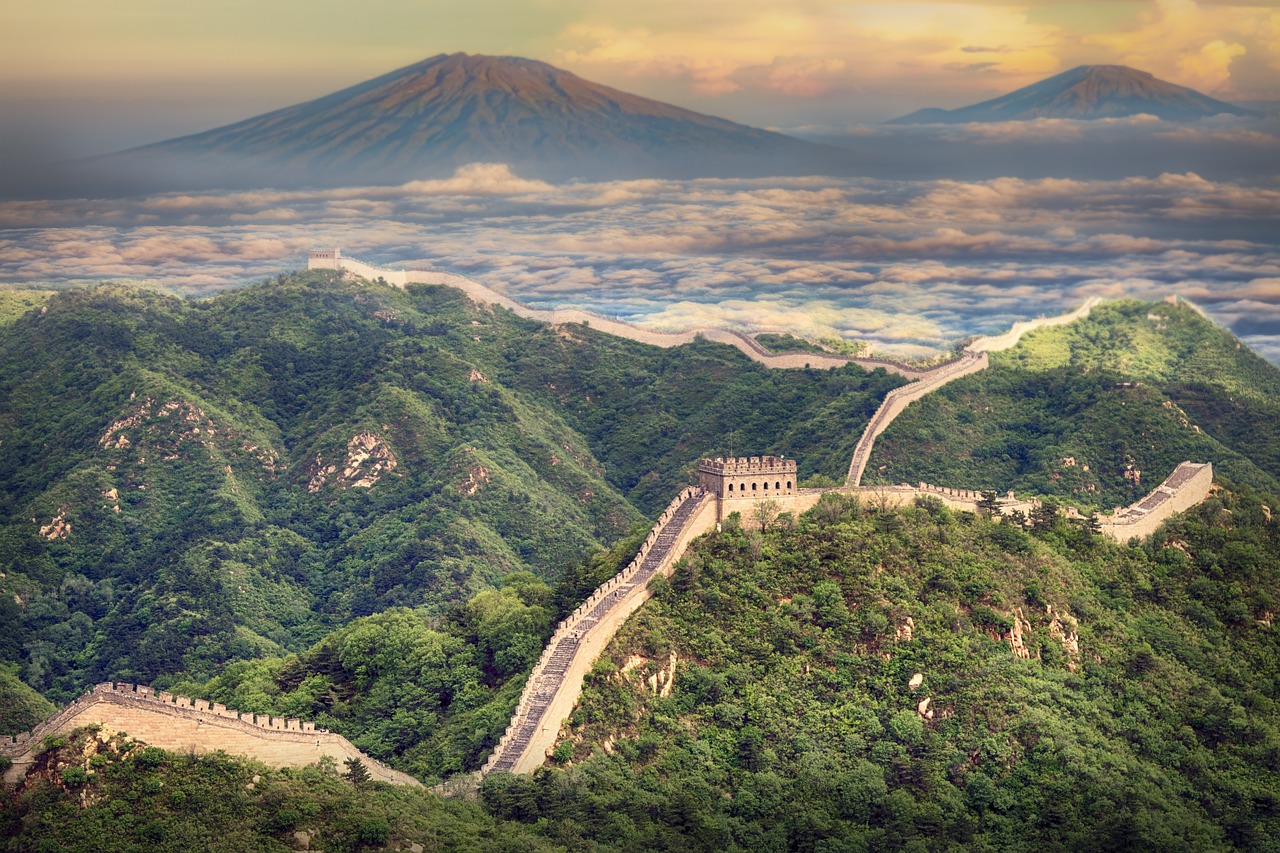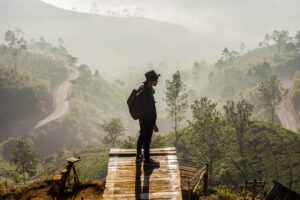Asia’s history is written not only in its temples and palaces, but also in the invisible lines that once connected distant lands. Before highways and airplanes, merchants, monks, and wanderers followed winding paths across mountains, deserts, and seas — carrying silk, spices, tea, and stories. These ancient trade routes shaped civilizations, exchanged cultures, and left behind trails still waiting to be walked.
For the modern traveler, retracing these paths is not just a history lesson — it’s an invitation to experience the continent through the footsteps of those who came before.
The Silk Road: Threads That Wove the World
No trade route is more legendary than the Silk Road — a vast network of paths linking China to the Mediterranean for over 1,500 years. This was not a single road, but a living web of connections across deserts, mountains, and bustling oases.
A journey might begin in Xi’an, China’s ancient capital, where camel caravans once set out loaded with bolts of shimmering silk. From there, traders crossed the Taklamakan Desert, stopping at towns like Kashgar where languages, religions, and cuisines mingled.
Today, you can walk the narrow alleys of Kashgar’s old town, sipping Uyghur tea and listening to the same market cries that echoed a thousand years ago. In Uzbekistan, the cities of Samarkand and Bukhara still stand as jeweled relics of the Silk Road — their turquoise-domed mosques and tiled madrasas telling stories of wealth and artistry born from trade.
Traveling even part of the Silk Road is a reminder that global connection isn’t new — it’s ancient.
The Spice Route: Flavors That Changed the World
If silk was the luxury of emperors, spices were the treasures of everyday life. The Spice Route stretched across Asia’s seas, carrying cinnamon from Sri Lanka, cloves from the Maluku Islands, and pepper from India’s Malabar Coast.
Imagine the port of Calicut in the 15th century: sails from Arabia and China crowding the horizon, the air thick with the scent of pepper and cardamom. Deals were struck in dozens of languages, and every ship carried not just goods, but tales from far-off lands.
Modern travelers can still follow the spice trail in Kerala, wandering through fragrant spice plantations or tasting fiery fish curries along the coast. In Indonesia’s Banda Islands, once the only source of nutmeg, you can stroll through sleepy villages that once shaped the global economy.
The Tea Horse Road: From China to Tibet
High in the mountains of southwest China, the Tea Horse Road carried a different kind of treasure — compressed bricks of dark tea. From the tea fields of Yunnan, caravans of mules and porters climbed treacherous trails to trade with Tibetans, bringing tea in exchange for sturdy war horses.
The route was not for the faint of heart: narrow paths clinging to cliffs, sudden snowstorms, and river crossings on swaying rope bridges. Today, parts of the road are still walkable, winding through ancient villages like Shaxi, where wooden caravan inns still stand.
Sip a cup of Pu’er tea in one of these old teahouses, and you taste centuries of history in every earthy note.
The Incense Route: Perfume of the Desert
While less famous than the Silk or Spice routes, the Incense Route carried frankincense and myrrh from Arabia into Asia. These aromatic resins, prized for religious rituals and medicine, were worth their weight in gold.
In Oman’s Dhofar region, frankincense trees still grow in the rocky hills, their branches scratched by the desert wind. Traveling through here, you can follow old camel tracks to remote wadis and stand in the ruins of ancient trading outposts. The scent of frankincense still lingers in the air — a smell that once traveled across continents.
Overlooked Paths: Hidden Routes of Asia
Not all trade routes were grand highways. Many were local lifelines that quietly connected communities:
- The Salt Roads of Ladakh, India – linking Himalayan villages to Tibetan salt lakes.
- The Jade Road of Myanmar – carrying raw jadeite to Chinese craftsmen.
- The Bamboo Raft Routes of Vietnam – where goods floated down rivers before the first roads were built.
Following these lesser-known paths offers a more intimate look at Asia’s past — and present.
Traveling the Routes Today
Retracing these routes isn’t about walking the entire length — it’s about finding pieces of them that speak to you.
In Uzbekistan, you can ride the modern trains that glide between Samarkand and Bukhara, imagining the camel caravans that took weeks to cross the same ground. In Sri Lanka, you can wander spice gardens where cinnamon bark is still peeled by hand. In Yunnan, you can trek quiet mountain trails that once rang with the bells of mule caravans. The magic lies in the small encounters: a farmer explaining how his ancestors carried salt over snowy passes, a market vendor offering you a taste of saffron tea, or a guide pointing out an old caravanserai hidden in the hills.
Why These Journeys Matter
Trade routes were not just about goods — they were about exchange in the truest sense. Languages blended, religions traveled, music crossed borders, and ideas took root in new soil. The Silk Road didn’t just move silk; it moved mathematics, astronomy, medicine, and art.
Walking even a small section today connects you to that timeless flow of exchange. You realize that our world has always been connected, and that curiosity — the desire to see beyond the horizon — is one of humanity’s oldest traits.
Tips for the Modern Explorer
- Do your research – Many sections of ancient routes pass through remote or politically sensitive areas. Check local regulations and safety conditions.
- Travel slowly – The routes were built for a pace of days, not hours. Take time to stop, talk, and taste.
- Respect local traditions – Many communities along these paths have preserved ways of life for centuries. Ask before taking photos and support local crafts.
- Look beyond the obvious – The magic is often in small towns and dusty tracks, not just in famous landmarks.
A Journey Without End
The old trade routes of Asia remind us that travel is more than movement from one place to another. It’s a thread that connects us — across time, cultures, and landscapes. Whether you’re standing in a bustling Uzbek bazaar, a quiet Himalayan pass, or a spice-scented port, you are part of a story that began long before you and will continue long after.
The road, after all, is never truly finished.




